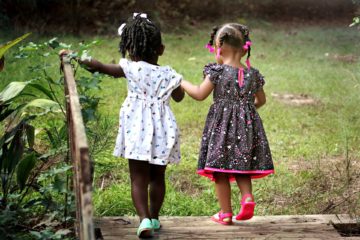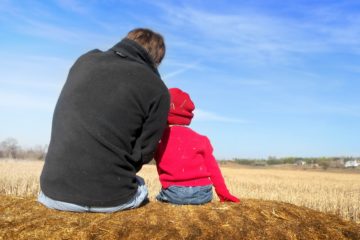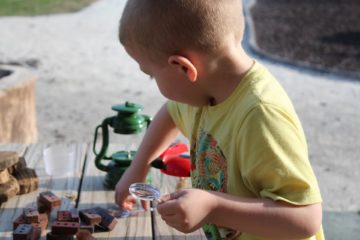Making observations is always the first step in science, and it is a skill that you can practice every day at no cost and with no planning. Although children are natural scientists, sometimes they need prompts or encouragement to look closer; to truly observe!
Observation vs. Inference
First, let’s talk about the difference between an inference and an observation. When scientists make observations, they are using their 5 senses to gather information. An observation is a statement of fact. When a scientist makes an inference, they are making a judgement based on their background knowledge and their interpretation of facts. Let’s use this pictures as an example:

If you had to guess what is in the cup above, you might say ‘hot coffee’. Would it surprise you to know that would be an inference? If you were to only use your five senses to name facts, you would have evidence such as : white container, filled with a brownish liquid, with white steam-like wisps above it, being held by someone wearing mittens.
As humans, we have to make inferences. It is the only way that we can classify and function in the world. But when you are doing science it is important to realize when you are jumping from observation to inference. For older students, you can teach the difference. When this comes up with younger students you can ask probing questions. If they say, ‘It’s hot!’, you can ask, ‘What evidence makes you say that?’
What to observe?
Or, really the question is, what’s not to observe! Any thing that you can get your hands on can be observed. During one particularly long wait in on school picture day, I had my preschool students remove their shoes and study them! You can have students observe school supplies, clothing, snacks, and nature items. Students can peruse non-fiction books and make observations of the pictures, or you can find interesting photos online that connect with the content you are studying.
Practice the skill of looking closely and observing like a scientist every single day until it is second nature and becomes part of the early childhood classroom routine.
How to encourage observations
Here are a list of ideas that I use to encourage my students to make observations in the early childhood classroom.
- Change your point of view: look at an item from a different angle. Duck down and get on eye level. Look at it from above instead of from the side. How does it look from across the table? How does it look when your nose is almost touching it? Changing our point of view can reveal new and different observations.
- Change the shape: some items will allow for manipulation, and observation can be deepened by changing the shape. Examples: cookies, leaves, paper, play-dough, oranges, etc. Don’t forget to use your other senses in the process: how does it smell? what sounds does it make?
- Hand to Hand: this activity allows students to utilize larger body movements to focus observation. Select an item that is safe to drop. Have students stand up and then pass the item from one hand to the other. Have them focus their attention on the weight, the texture, and feeling the space the item takes up in their hands.
Science in early childhood doesn’t have to be messy or expensive; a simple interaction with an object can be an opportunity to engage in science practices. I think you will find that when you start making a practice of looking closely you will start to see more and more magic in the world!



0 Comments